When Naughty Dog revealed The Last of Us Part 1 earlier this year, a complete visual remake of the original The Last of Us from 2013, we were a little surprised. There’s always a debate to be had about the timing of a re-release, and we wondered whether the new version would be different enough from the 2014 PS4 remaster and 2016 PS4 Pro patch to justify a purchase from newcomers to the seasons and series veterans alike. After spending some time with the final release, we have some answers – including comparisons between the new PS5 release and the prior PS3 and PS4 versions, the video modes available and the gameplay changes included.
First, let’s rewind. The Last of Us was the PS3’s swan song, a showpiece title released just months before the arrival of the PS4. The mix of storytelling, survival horror and action resonated with fans, becoming one of Naughty Dog’s most successful games ever. The technical challenge Naughty Dog created for itself was the creation of a world almost entirely devoid of electric lights – The Last of Us relies heavily on indirect lighting which, in 2013, was still very difficult to achieve even when leaning on pre-calculated techniques. Against the odds, Naughty Dog did manage to come up with a suitable solution to this problem – it’s far from perfect, mind you, but the world was convincingly lit and designed. The problem was that on PS3, the performance just didn’t hold up and many larger areas exhibited severe frame-rate issues that detracted from the experience.
This is where PS4 enters the picture. One year later, Naughty Dog released a Remastered version of the game for the new console offering higher resolutions and a smooth frame-rate – effectively overcoming the issues inherent in the original release. Naughty Dog returned to The Last of Us once again with that PS4 Pro update, allowing for up to native 4K rendering at 30fps. That PS4 Pro code also runs great on PS5, so what more could a native PS5 version offer?
As it turns out, there’s more to this project than we anticipated. Naughty Dog has remade every inch of the game’s assets – as you’ll soon discover, there is a lot to compare. But before we dive into those comparisons, however, let’s quickly touch on the basics.
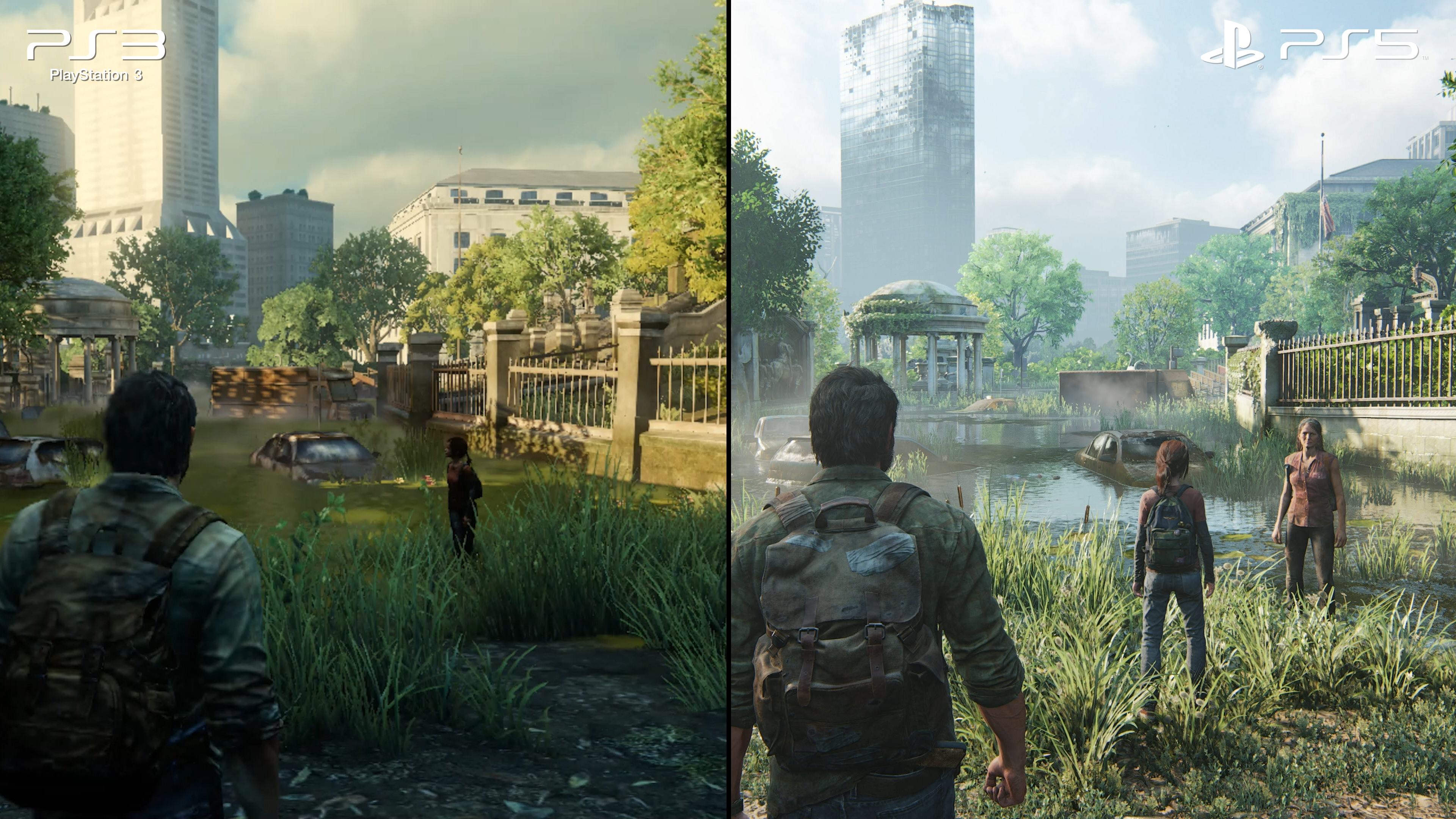
So The Last of Us Part 1 includes the original campaign and the Left Behind DLC, with a fleshed-out main menu that includes a robust extras menu – but note this is a strictly single-player release. There are a few different graphics options, with a 4K 30fps fidelity mode and a 60fps performance mode with dynamic resolution scaling (DRS), which normally resolved at 1440p. If you use a 120Hz screen, you can use fidelity mode at 40fps instead, and VRR displays let you unlock the frame-rate to go above 60fps in performance mode or above 40fps in fidelity mode. The comparisons in the article and the video use fidelity mode unless noted otherwise, as both Part 1 and Remastered on PS4 Pro support native 4K output and it made sense to compare performance at the highest possible pixel count.
Note as well that the PS3 and PS4 iterations marry Naughty Dog’s real-time graphics engine, used during gameplay, with pre-rendered cut-scenes, so we’re comparing video clips on PS4 Pro versus fully real-time cutscenes on PS5.

In addition to real-time sequences, Part 1 features noticeable improvements in character rendering, effects work – such as depth of field or motion blur – and the conveyance of emotion. Every character has been revamped from top to bottom – it would appear that Naughty Dog wanted to find a balance between creating more realistic digital humans while still respecting the original source material. In doing so, I would describe the new models are more natural in appearance but still very much The Last of Us. Skin rendering is now more natural, with subsurface scattering simulating the penetration and dispersion of light beneath skin, more realistic facial hair and eyes, and upgraded clothing. The push towards increasingly realistic rendering has an impact on proportions as well – the new characters are less stylised and more like a real person that could exist. Whether you prefer one or the other is subjective, but the increase in fidelity is visible all the same.
Furthermore, cutscene direction has received numerous tweaks – while many follow the same basic flow, new camera angles are often used and animation tweaks are present. Lens simulation is enhanced – motion blur shutter speed is now correctly tuned for different frame-rate options, unlike The Last of Us Remastered, and depth of field is far more cinematic. Furthermore, the precious few scenes that were real-time on PS4 have been completely remade. So when it comes to cut-scenes, there are dramatic changes in this new version of the game – but real-time graphics have received an even more radical overhaul.
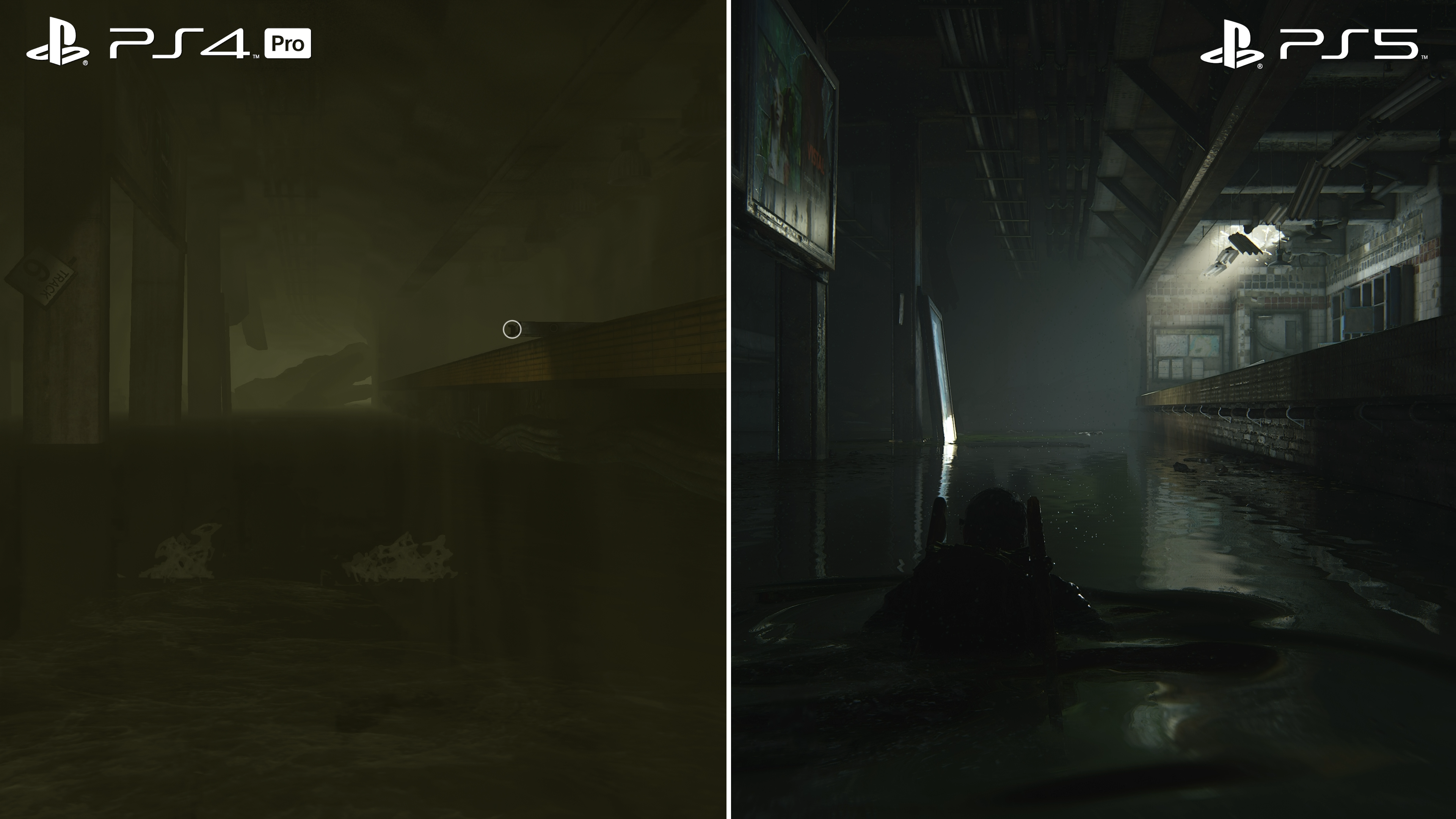
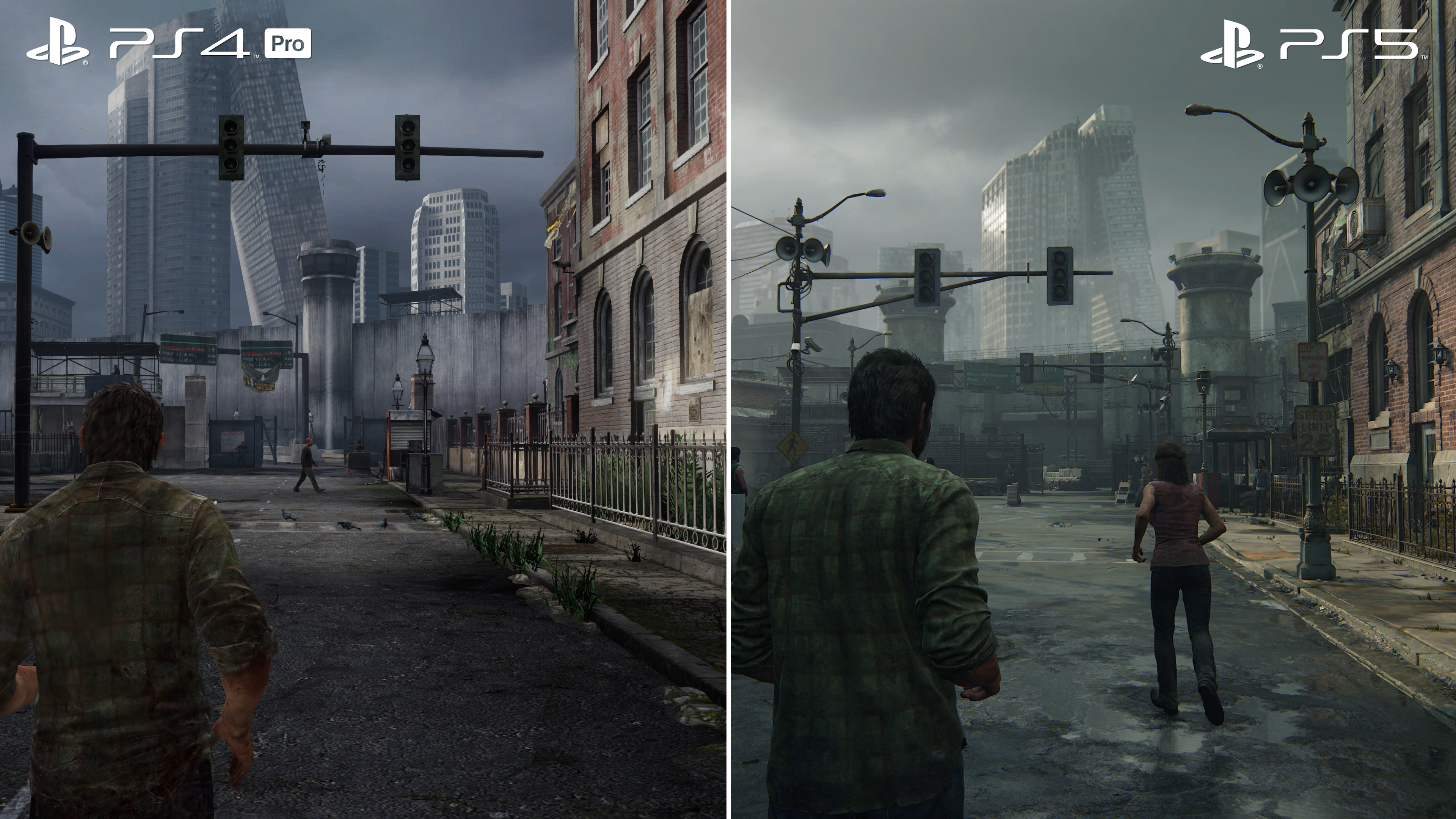
The changes here are evident from even the opening scenes of the game. In the original version, the shadow penumbra produced by electric lights is strong, but on PS5 shadows exhibits a gentle falloff with a soft penumbra for a more realistic look. Part 1 also adds shadows from muzzle flash and car headlights, something absent in the original, and ambient shadows around characters’ feet are improved. Similarly, the groundbreaking but now dated volumetric lighting in the PS3 original seem to have shifted to a modern frustum-aligned voxel solution in the PS5 release which is used far more often throughout the game – fire and explosions now produce volumetric light as you’d expect. Lighting also takes into account the properties of transparent surfaces; light passing through a dirty windshield reveals the texture of the surface.
Beyond these more modern rendering techniques, the actual increase in geometric detail is significant – everything is more fleshed out and richly sculpted. Expect new materials, smoothed-off edges, greater incidental detail, new background structures and tons of small flourishes.
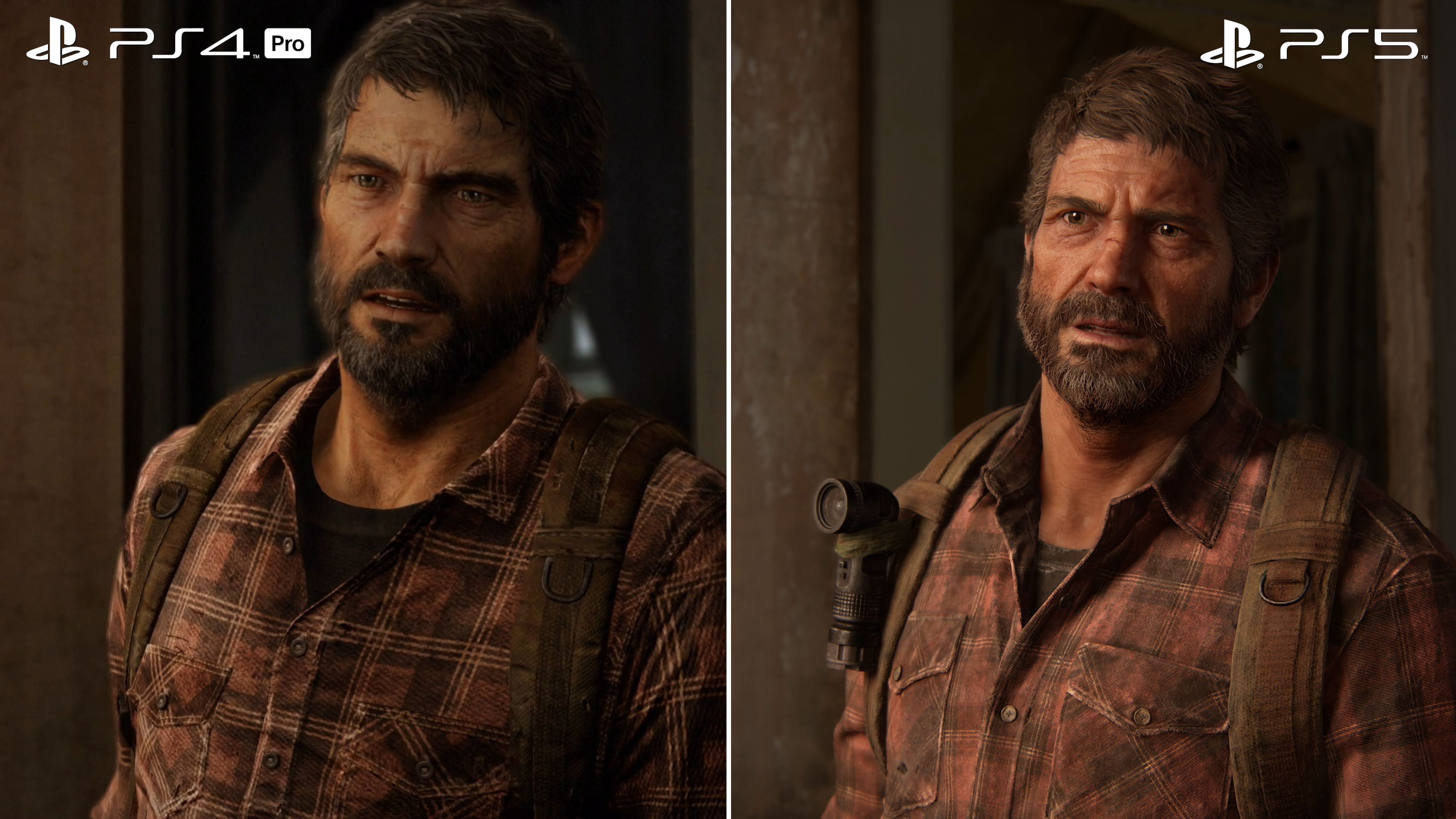
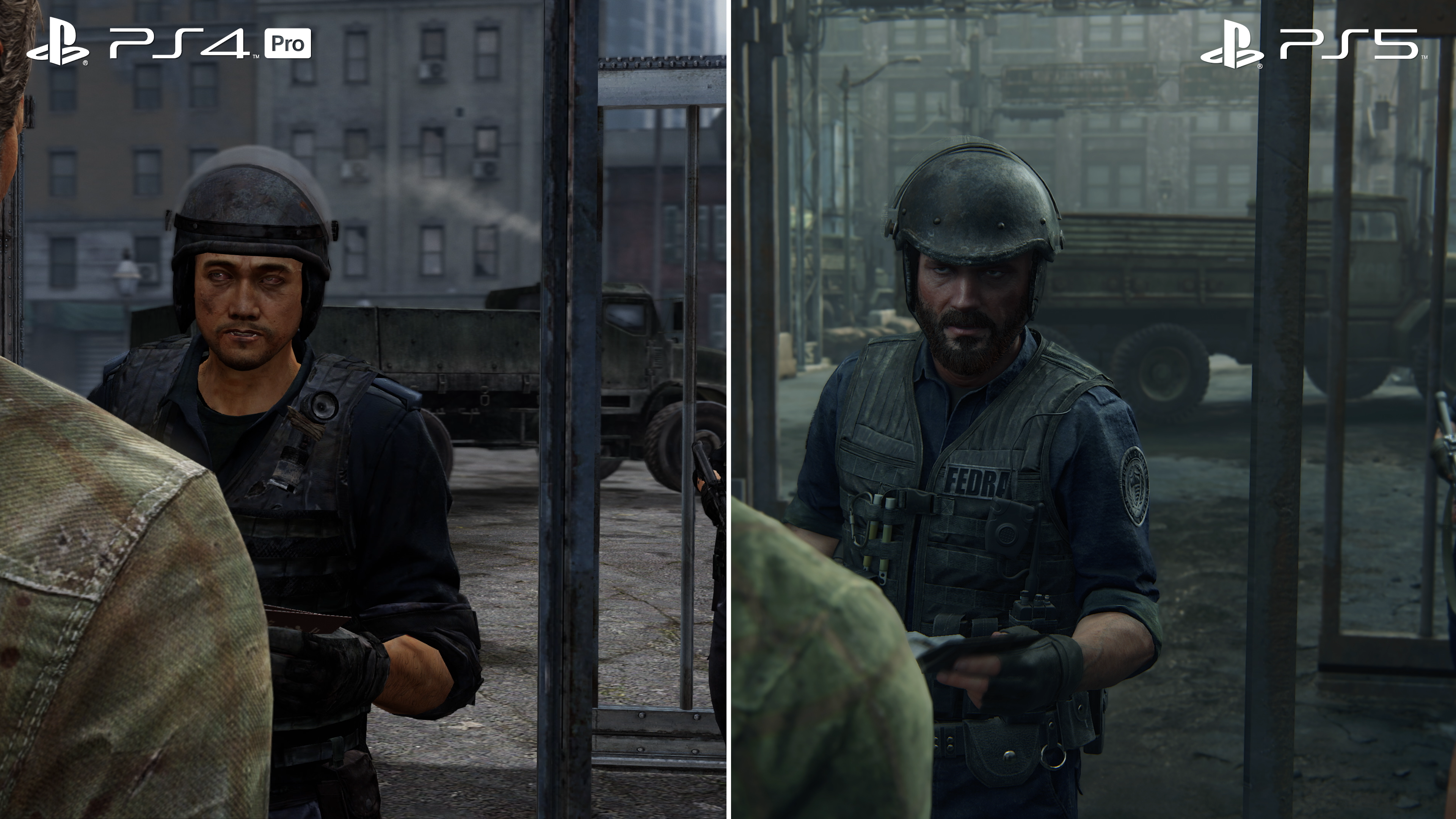
Naughty Dog seem to have rolled their lighting upgrades featured in The Last of Us Part 2 directly into Part 1. This also means that improvements introduced in Uncharted 4 are here as well, such as physically-based materials. The idea here is that surfaces, whether brick, stone, wood, leather or something else entirely, all approximate the behavior of light as it functions in real-life rather than relying on artist intuition alone. So now surfaces have a base color plus roughness, specular and metallic properties.
Reflections on water are now more prominent too. While I would have preferred ray tracing in this instance, the team instead opted for a mix of high-resolution cube-maps and screen space reflections. What surprised me is the quality of these cube maps – they’re seemingly hand placed to provide the best approximation of detail and parallax while blending seamlessly with SSR. The rippling that appears while swimming or walking through water is also far more prominent in the new version of the game. Furthermore, tributaries and streams now include flow simulation as water passes over and around rock formations complete with foam generation. An additional caustics layer is even applied to the environment when your flashlight intersects a water’s surface, adding an extra dimension to the presentation.
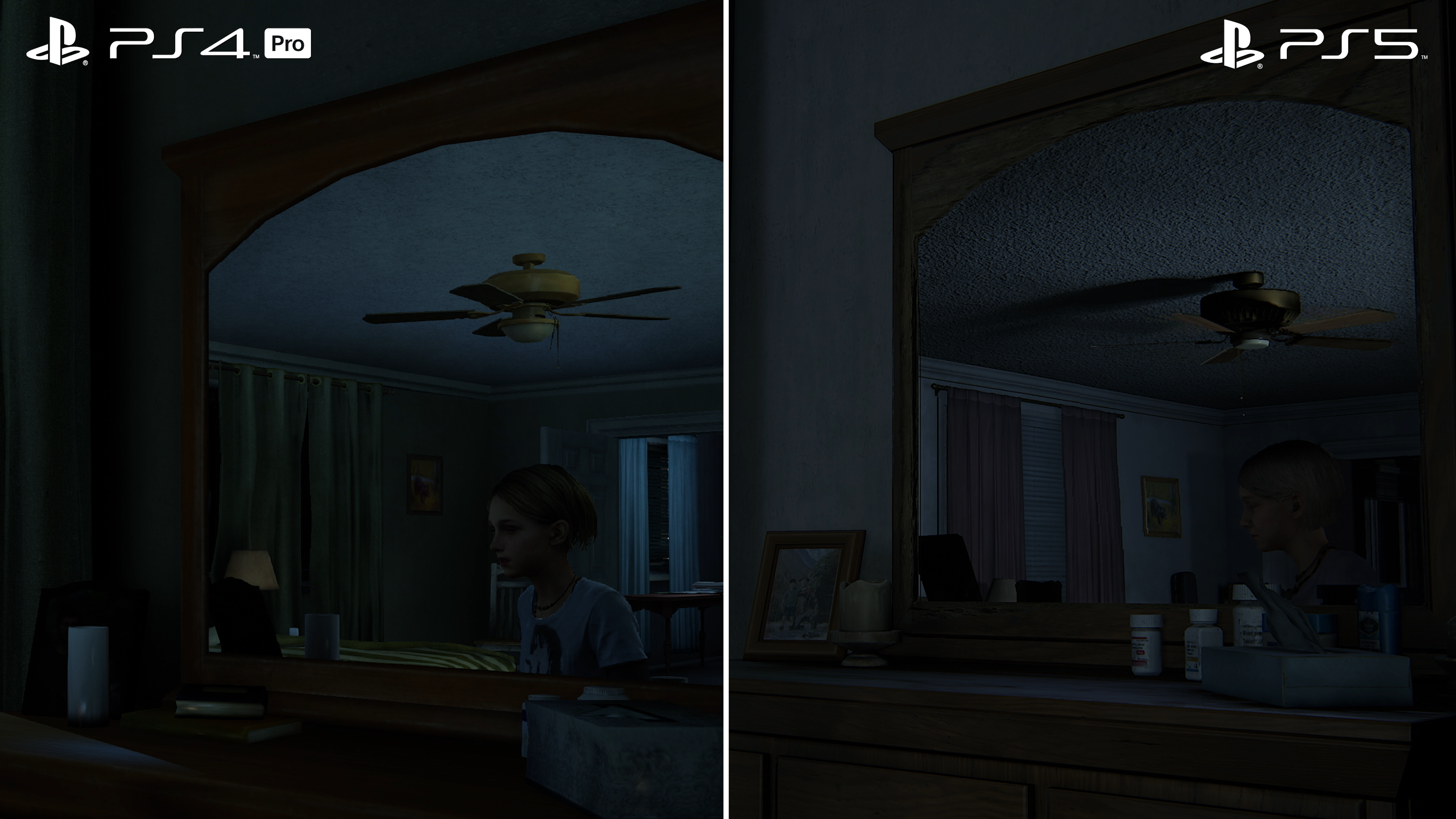
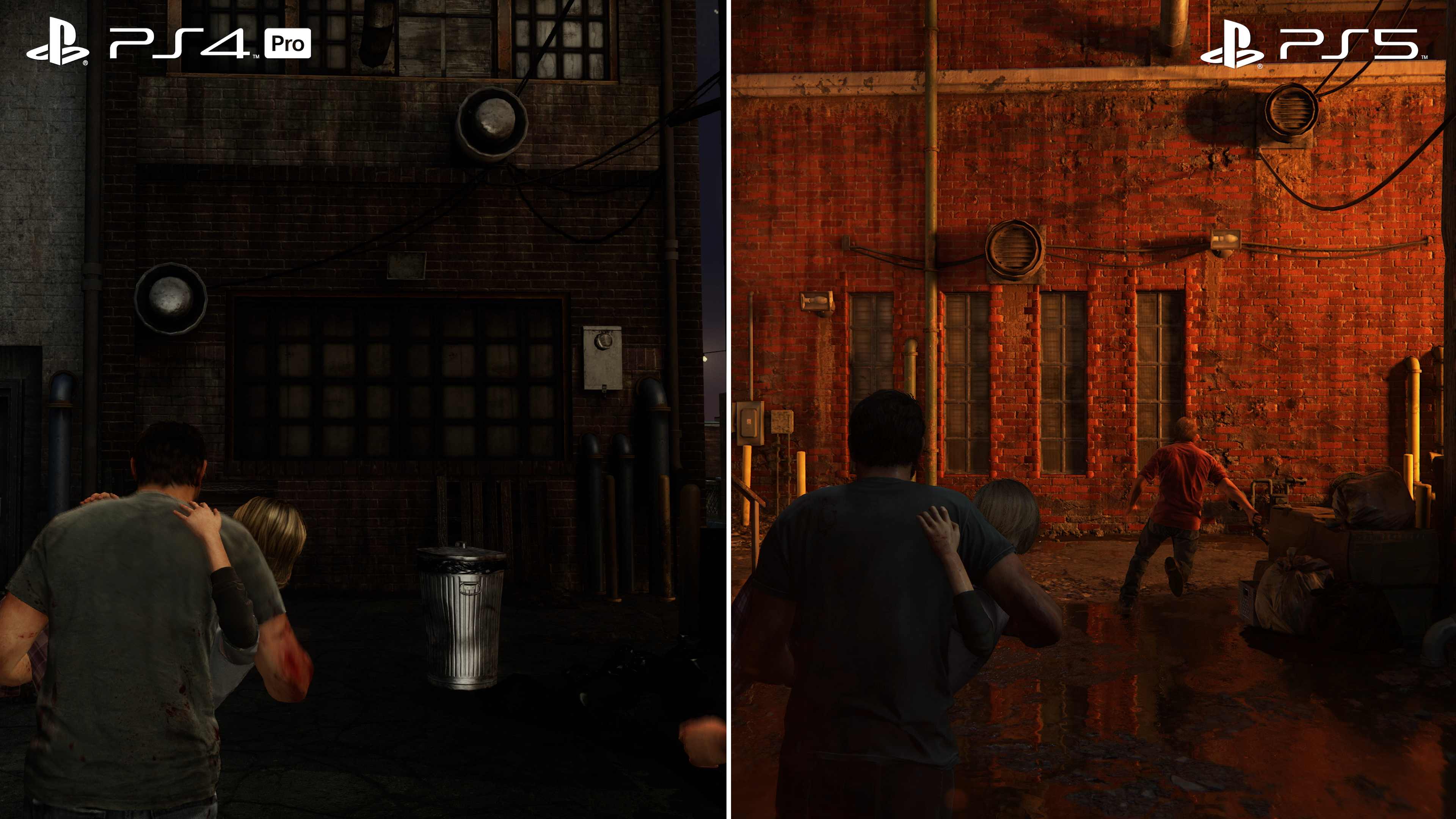

One of the features included in the original is secondary bounce from beam of a flashlight beam – if you point your light at a red wall, you’ll get a subtle bounce contribution. They used what’s called a reflective shadow map to pull this off but there’s a drawback – it’s used only on specific surfaces in select scenes. In Part 1 however, secondary bounce is far more frequent even in moderately lit areas. If you point your light at a reddish-brown panel, for instance, the area around you takes on this color with a subtle glow. Be warned that this technique does comes with a performance penalty in in certain areas when coupled with the 40fps mode.
I could continue to hammer this home with additional examples, but you get the picture: it’s clear that a lot of time and effort was poured into recreating this world. That said, I did notice one instance where the original has a small advantage – in Remastered, when Joel walks beneath running water, the game generates particles to simulate splashes. In Part 1, however, this no longer occurs. So the original does have that going for it!
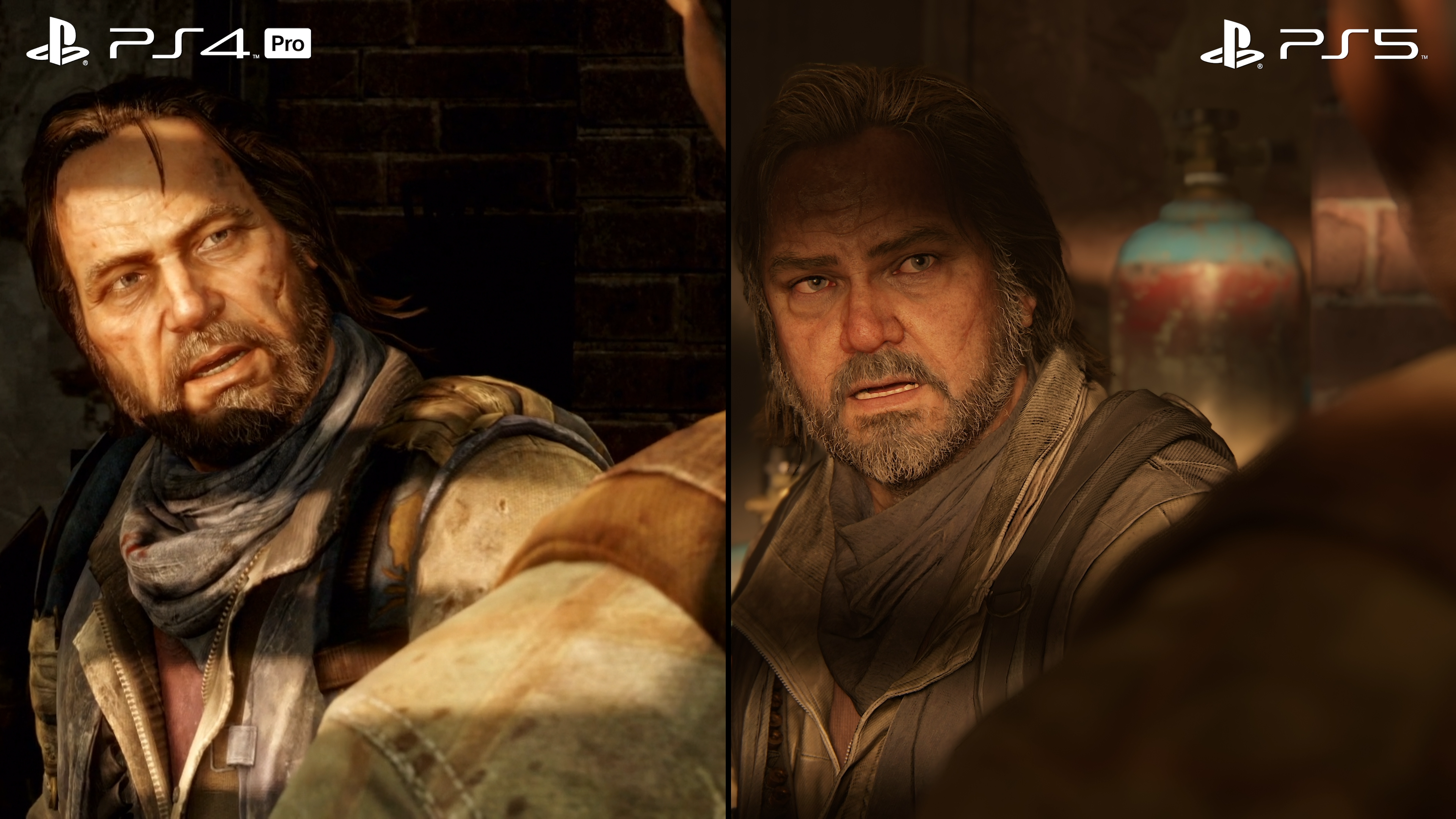

As for how it compares against The Last of Us Part 2, that is perhaps more difficult to answer. It’s clear that the work done on Part 1 is derived from the upgrades created for the second game but I would say it feels largely similar. Cutscenes are of comparable quality and both look exceptionally excellent. These real-time sequences are among the best-looking cutscenes I’ve seen in a video game. If you stop and look closely at the gameplay models using photo mode, however, there is definitely a sense that Part 1 has an edge in terms of detail. Joel appears weirdly older and more grizzled in the remake but there’s no doubt that his in-game model more closely resembles the real-time cutscenes now. Weapons and clothing are similar, but it’s clear that they didn’t just use the same weapon models from Part 2 in this new game.
Given all this, let’s shift gears a bit and talk about gameplay. Naughty Dog promised enhanced gameplay, after all, but what does that mean in practice – are we looking at new play mechanics, such as the stealth upgrades introduced in Part 2, or a recreation of the original experience that doesn’t touch the core mechanics?
In this case, Naughty Dog opted for the latter. Part 1’s Joel is limited to the same basic moveset featured in the original game rather than the faster gameplay of Part 2. However, more here has changed than I expected. Animation, camera work and even enemy behavior has changed between the two versions.
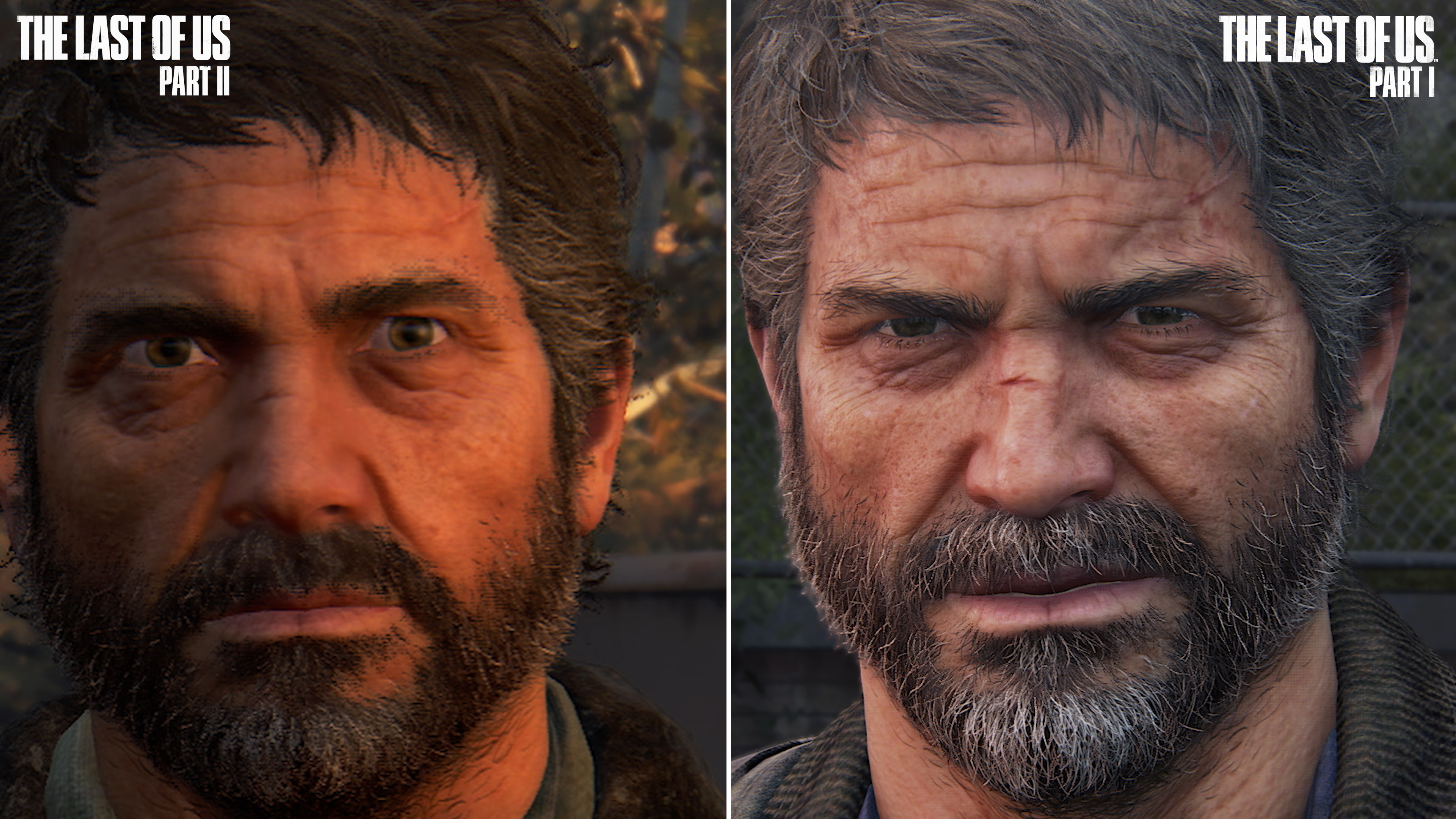
Taking a look at pistol gunplay to start, the core shooting mechanics feel more in line with Part 2 – camera position, weapon animations and hit reactions are all far more polished. The motion blur, smoother, slower zoom and aiming position feel like the second game, while the animation of firing the weapon is unique to both prior versions but is closer to Part 2 than the PS4 remaster. The same is true when using the shotgun – a different reticle, different animation and stronger kickback all lend the game a very different feel. The basic moving and shooting action has been overhauled and Part 1 feels like a nice hybrid between the two games.
Of course, Joel does not have the mobility of Ellie or Abby from Part 2, which means we get rather delicate changes to level design. Windows or doors have been moved or removed and object placement has been altered, but the basic layouts are the same – which I think explains why the development team opted not to introduce the sophisticated stealth system featured in Part 2. That game has levels designed specifically around that moveset, like large patches of grass that allow you to sneak around taking out targets. The original game, however, doesn’t take this into account and would likely require more significant changes to overall level design – which is a tricky line to walk. I’d have enjoyed new levels but who knows how the vocal fanbase would react. With more substantial changes, Naughty Dog basically run the risk of producing a Metal Gear Solid Twin Snakes scenario – where adapting more advanced play mechanics into levels not designed for them breaks the game. Whether you appreciate this decision or not, I suspect this is why it was designed this way.

However, while the levels are quite similar, there have been changes to AI behavior – which is a good thing, given the many memable moments in the original release where your AI companion runs around bumping into enemies while you’re hiding for your life. I tested this in the dam attack scene in the original game – it takes 30 awkward seconds for an AI companion to despatch an attacking enemy at close range, and after waiting motionless for two minutes, the enemy AI hasn’t hit or even reached Joel once. The whole scene just looks goofy.
On PS5, things are much different. In the same scene, the enemy bursts through the door, killing a friendly on the way and engaging another before drawing first blood on Joel, just 13 seconds into the encounter. I’m forced to take him out or face death but, after doing so, I watch the rest of the scene and the AI manages to clear out the room entirely. The difference in behavior is significant here.
In another scene in the original game, the enemy AI typically behaves in one of two ways – they either hold back doing nothing or they just rush in as fast as possible. Sometimes enemies circle around for a flank, but you don’t get the stalking behaviour that excited me from the original 2012 E3 trailer. In Part 1, even on easier modes, enemies offer a wider range of behaviour. They can be aggressive, but they also tend to use cover more strategically rather than just running around – there’s more nuance here.
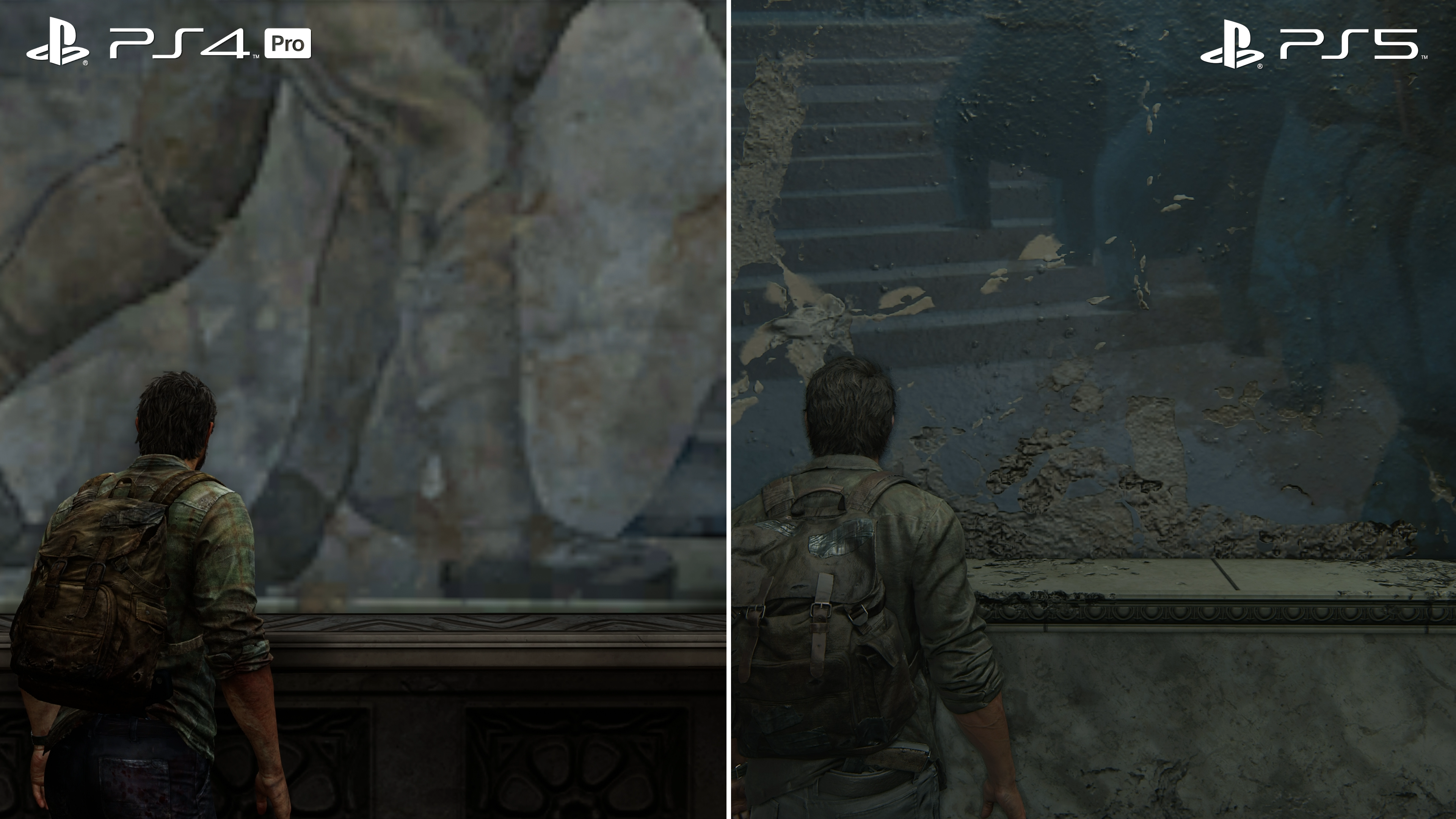
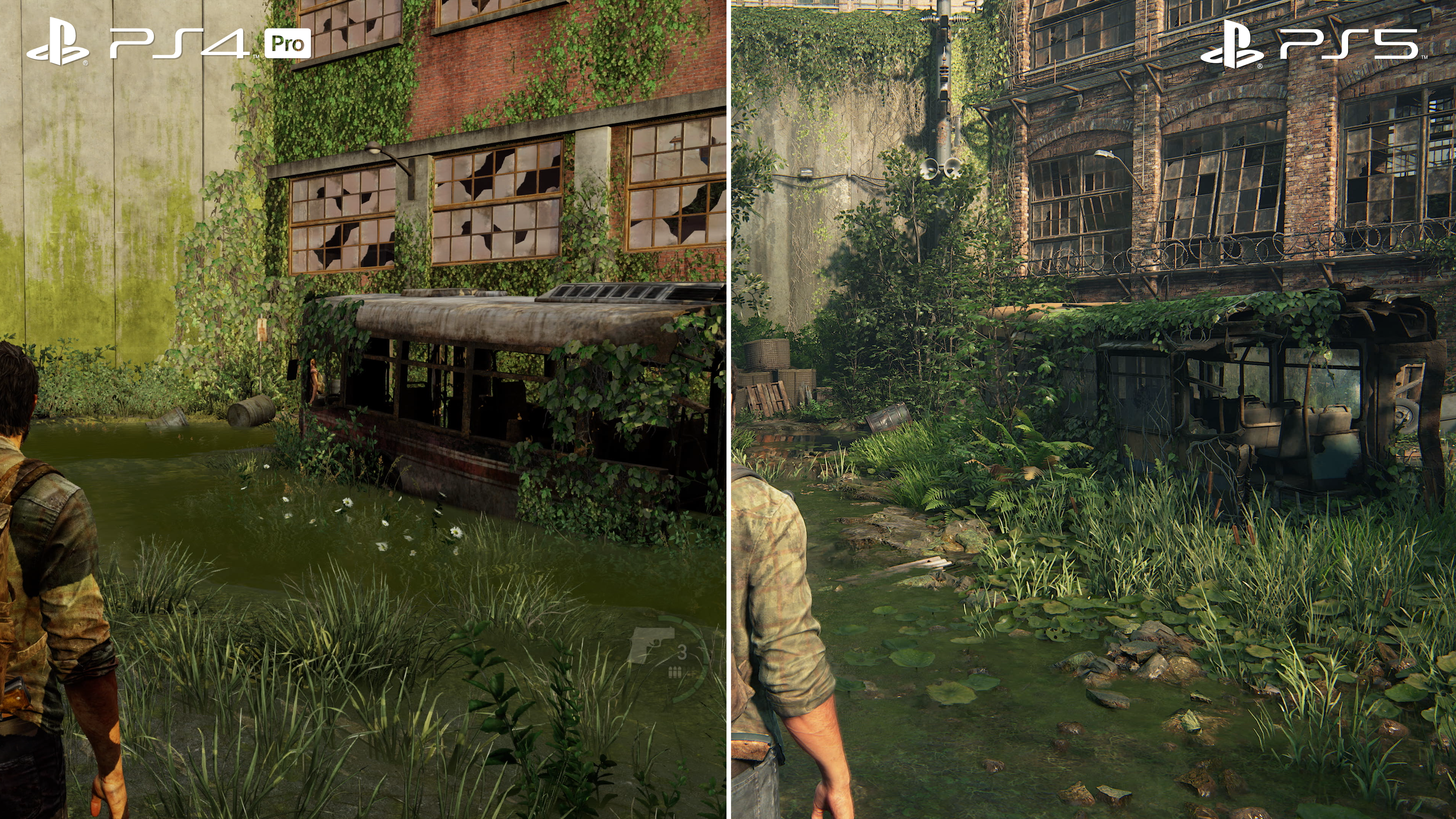
There are also specific gameplay enhancements, like downing enemies and taking them hostage with a shot to the legs. This is technically possible in the original game, but in the remake you can do this reliably, adding a layer of strategy to the core gameplay. The environments feel more reactive this time too. There’s an increase in the number of physics-based objects strewn across the environment, plus improvements to the destruction system.
When you combine this new AI behavior with the improved shooting mechanics and more reactive environment, it does feel suitably different. This represents much of what Naughty Dog refers to as ‘improved gameplay’ and this description does seem accurate.
So, to sum up: playing and writing about The Last of Us Part 1 has been an interesting exercise. I can attest that if you’ve not played the original in a while, it feels familiar when you first pick up that controller – but the deeper you explore it, the more obvious it becomes that Naughty Dog put a ton of work into this game. It’s as complete a remake as you could hope for, given the age of the original. I’m not here to award a review score or recommend everyone check it out, but I think what we’ve discussed today at least showcases what has changed. Even if The Last of Us Part 2 plays better overall, due to the more expansive level design and new moveset, this new PS5 release is certainly the best version of The Last of Us.




